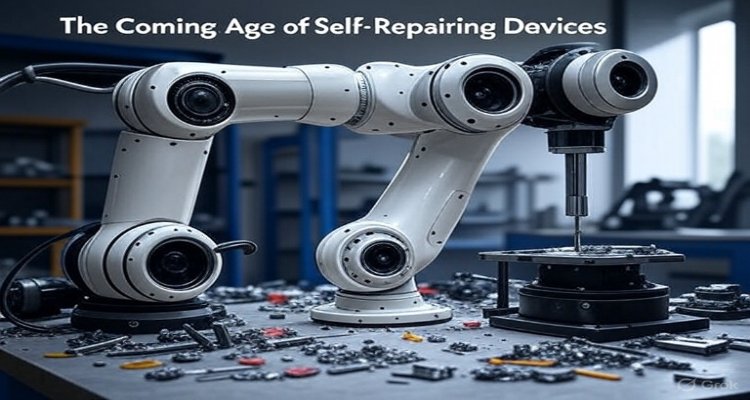The Coming Age of Self-Repairing Devices
Self-repairing devices are shifting tech innovation into a new era, promising durability, sustainability, and reduced e-waste.
Introduction: The Promise of Healing Machines
Imagine dropping your smartphone and watching a crack appear across the screen—only for it to vanish within minutes as the glass slowly re-knits itself. Or picture a laptop battery that detects microscopic damage and heals before it leads to failure. What once sounded like science fiction is now edging closer to reality. We are entering the coming age of self-repairing devices, a frontier where machines can fix themselves much like living organisms do.
Context & Background: From Disposable Tech to Durable Futures
For decades, consumer technology has followed a cycle of innovation and obsolescence. Broken phones, worn-out batteries, and cracked screens fueled a culture of constant replacement. According to the United Nations’ Global E-Waste Monitor, the world generated over 60 million tons of electronic waste in 2023, with only a fraction recycled responsibly.
But with rising awareness of environmental costs and mounting pressure on manufacturers to build sustainable products, researchers have been exploring materials and systems that can heal damage automatically. Early breakthroughs—such as self-healing polymers and conductive gels—hinted at a future where electronics could endure far longer than today’s fragile gadgets.
Main Developments: Breakthroughs in Self-Healing Technology
Recent years have brought rapid progress:
- Self-Healing Screens: Scientists have developed glass and polymer blends capable of repairing surface cracks within hours. Some prototypes can restore full transparency and touch sensitivity after damage.
- Battery Innovation: Experimental lithium-ion and solid-state batteries can regenerate damaged electrodes, extending lifespans and reducing fire risks.
- Circuits That Heal: Flexible electronic circuits infused with microcapsules of liquid metal can reconnect broken pathways when damaged, ensuring devices continue working.
- AI-Powered Diagnostics: Beyond materials, artificial intelligence is being tested to predict faults and trigger “digital healing” processes that prevent software crashes or hardware strain.
These advancements, once confined to research labs, are now being tested in consumer prototypes, signaling the dawn of mainstream self-repairing electronics.
Expert Insight: Industry and Public Reactions
Technology analysts are cautiously optimistic.
“Self-repairing devices could reshape the consumer tech industry, extending product lifespans by years and reducing the environmental toll of constant upgrades,” says Dr. Aisha Rahman, a materials science professor at MIT. “But adoption will depend on affordability and scalability.”
Consumers, meanwhile, express excitement but also skepticism. In online forums, some praise the potential environmental impact, while others worry about higher costs or reduced need for repair services, which could disrupt jobs in the repair economy.
Impact & Implications: Who Stands to Gain?
If self-repairing technology reaches mass adoption, its implications could be transformative:
- For Consumers: Devices that last longer and require fewer costly repairs.
- For Manufacturers: A shift in product design, marketing longevity over disposability.
- For the Planet: A dramatic reduction in e-waste, supporting global sustainability goals.
- For Repair Industries: A potential disruption, requiring adaptation toward software, customization, or upcycling services.
At the same time, challenges remain—manufacturing costs, material limitations, and questions of transparency. Will companies allow true self-repair, or limit it to partial fixes to maintain upgrade cycles?
Conclusion: The Future of Self-Healing Tech
The coming age of self-repairing devices is more than a technological leap; it is a cultural and environmental turning point. As screens that heal, batteries that regenerate, and circuits that reconnect move from labs into consumer hands, society may rethink its relationship with technology—not as disposable tools, but as enduring companions.
If realized at scale, self-repairing devices could mark the beginning of an era where sustainability and innovation walk hand in hand.
Disclaimer: This article is for informational purposes only. The developments and technologies discussed are based on current research and industry trends and may evolve over time.











